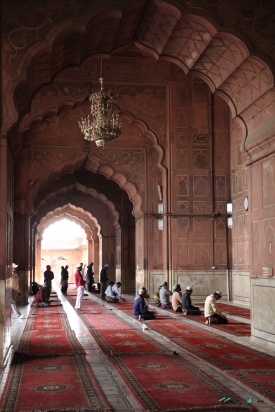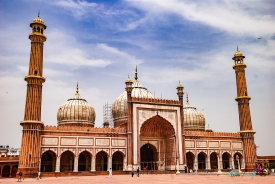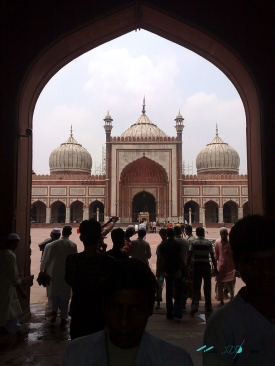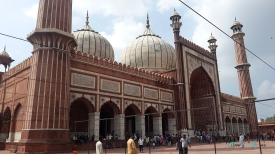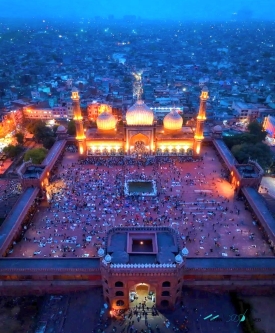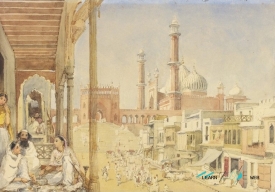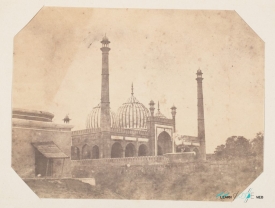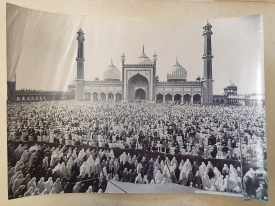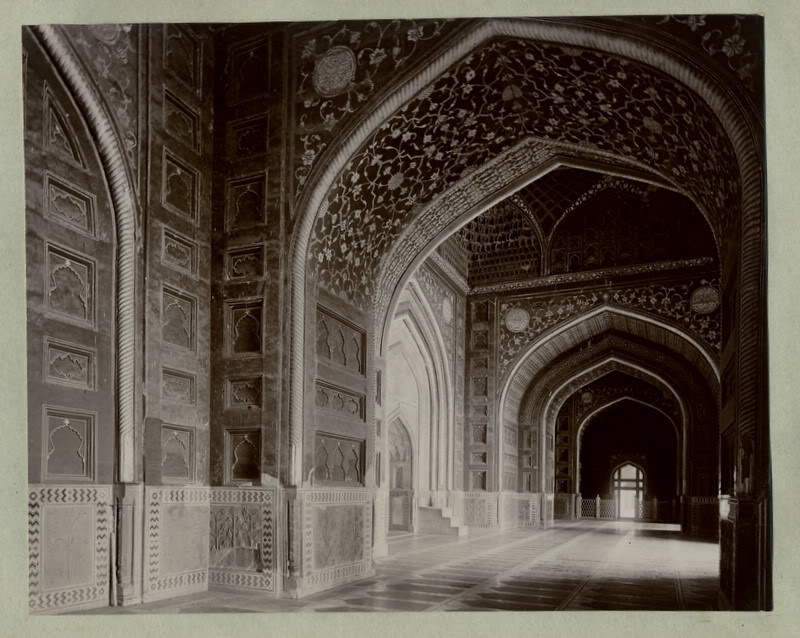
Nestled in the historic city of Shahjahanabad, now known as Old Delhi, the Jama Masjid stands as a towering example of Mughal architecture and a beacon of India’s rich cultural heritage. Known officially as Masjid-i-Jehan-Numa, meaning “the mosque that reflects the world,” this edifice has not only served as a central place of worship but also as a stage for significant historical events. Built by the Mughal Emperor Shah Jahan between 1644 and 1656, the Jama Masjid is one of the largest mosques in India and continues to play a crucial role in the social, cultural, and religious tapestry of Delhi.
The construction of the Jama Masjid was a monumental task that involved over 5,000 workers, including artisans from across the East and Europe. The mosque showcases a brilliant use of red sandstone and white marble that were hallmarks of Mughal architecture. The mosque's vast courtyard can accommodate up to 25,000 worshippers, and its large, bulbous domes are topped with golden finials, which sparkle under the Delhi sun, adding to the majestic skyline of the old city.
The mosque is accessible via three grand gates: the eastern gate was historically reserved for the emperor, emphasizing the mosque's connection to Mughal royalty, while the northern and southern gates were for the public. The prayer hall features a series of high arches and intricate mihrabs (prayer niches) that showcase the exquisite craftsmanship of the Mughal artisans.
Under Shah Jahan’s reign, the Jama Masjid served not only as a religious site but also as a symbol of the emperor’s authority. The khutba (sermon) recited by the emperor during Friday prayers was a public declaration of his sovereign rule over India. This practice underlined the mosque’s importance as a center of power during the Mughal era, a tradition that continued until the empire's decline.
The mosque’s role extended beyond the religious sphere into the political arena during India’s struggle for independence and post-independence period. Figures like Abul Kalam Azad chose the Jama Masjid as a platform to inspire unity and resilience among Indians, further cementing its status as a symbol of communal harmony.
Despite its historical and architectural significance, the Jama Masjid faces numerous challenges related to its preservation. Issues such as pollution, urban congestion, and the wear and tear from constant use have necessitated ongoing conservation efforts. Contributions and funding for maintenance have been received from various quarters, including international donations, reflecting the global recognition of the mosque’s heritage value.
The Jama Masjid of Delhi is more than just a mosque; it is a symbol of India’s diverse history and its capacity to integrate various cultural influences into its identity. As a testament to India’s rich past and as a beacon for future generations, the Jama Masjid remains one of the most significant monuments in India, embodying the spirit of an era that, though bygone, continues to inspire awe and reverence to this day.
In preserving and understanding such monuments, we not only honor the craftsmanship and aesthetic vision of our ancestors but also foster a sense of unity and continuity that is vital for the cultural preservation of our global heritage. This majestic mosque, therefore, is not just a relic of the past but a living reminder of the historical narratives that continue to shape our present and future.
The construction of the Jama Masjid was a monumental task that involved over 5,000 workers, including artisans from across the East and Europe. The mosque showcases a brilliant use of red sandstone and white marble that were hallmarks of Mughal architecture. The mosque's vast courtyard can accommodate up to 25,000 worshippers, and its large, bulbous domes are topped with golden finials, which sparkle under the Delhi sun, adding to the majestic skyline of the old city.
The mosque is accessible via three grand gates: the eastern gate was historically reserved for the emperor, emphasizing the mosque's connection to Mughal royalty, while the northern and southern gates were for the public. The prayer hall features a series of high arches and intricate mihrabs (prayer niches) that showcase the exquisite craftsmanship of the Mughal artisans.
Under Shah Jahan’s reign, the Jama Masjid served not only as a religious site but also as a symbol of the emperor’s authority. The khutba (sermon) recited by the emperor during Friday prayers was a public declaration of his sovereign rule over India. This practice underlined the mosque’s importance as a center of power during the Mughal era, a tradition that continued until the empire's decline.
Historical Significance
The mosque has witnessed numerous historical events that have shaped the region. During the British Raj, it became a focal point for political and social gatherings. Despite being seized and desecrated by the British after the 1857 Revolt, where it was used as a barracks, the mosque was eventually returned to the Muslim community, reflecting its enduring place in the heart of Old Delhi.The mosque’s role extended beyond the religious sphere into the political arena during India’s struggle for independence and post-independence period. Figures like Abul Kalam Azad chose the Jama Masjid as a platform to inspire unity and resilience among Indians, further cementing its status as a symbol of communal harmony.
Cultural and Social Hub
Today, the Jama Masjid is not only a place for worship but also a vibrant hub of cultural and social interactions. It attracts thousands of visitors and tourists who come to admire its architectural beauty and delve into its historical past. The mosque’s vicinity to other historical sites like the Red Fort and Chandni Chowk enriches the cultural experience, making it a pivotal landmark in Delhi’s tourism circuit.Despite its historical and architectural significance, the Jama Masjid faces numerous challenges related to its preservation. Issues such as pollution, urban congestion, and the wear and tear from constant use have necessitated ongoing conservation efforts. Contributions and funding for maintenance have been received from various quarters, including international donations, reflecting the global recognition of the mosque’s heritage value.
The Jama Masjid of Delhi is more than just a mosque; it is a symbol of India’s diverse history and its capacity to integrate various cultural influences into its identity. As a testament to India’s rich past and as a beacon for future generations, the Jama Masjid remains one of the most significant monuments in India, embodying the spirit of an era that, though bygone, continues to inspire awe and reverence to this day.
In preserving and understanding such monuments, we not only honor the craftsmanship and aesthetic vision of our ancestors but also foster a sense of unity and continuity that is vital for the cultural preservation of our global heritage. This majestic mosque, therefore, is not just a relic of the past but a living reminder of the historical narratives that continue to shape our present and future.



